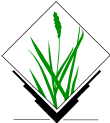Changes between Version 114 and Version 115 of Grass7/NewFeatures
- Timestamp:
- 12/27/12 07:34:23 (12 years ago)
Legend:
- Unmodified
- Added
- Removed
- Modified
-
Grass7/NewFeatures
v114 v115 28 28 29 29 * G7:i.albedo: new 30 * G7:i.aster.toar: new 30 31 * G7:i.biomass: new 32 * i.class: rewritten in [http://grasswiki.osgeo.org/wiki/WxIClass wxGUI] 31 33 * G7:i.cca: supports now much more raster maps for canonical analyses (multi-spectral (8) -> hyper-spectral (thousands)), converted from Fortran style to C-style 32 34 * G7:i.eb.eta: new 33 35 * G7:i.eb.evapfr: new 34 * G7:i.eb.h_SEBAL01: new 36 * G7:i.eb.h_sebal01: new 37 * G7:i.eb.netrad: new 35 38 * G7:i.eb.soilheatflux: new 36 39 * G7:i.emissivity: new 37 * G7:i.evapo.time_integration: new 40 * G7:i.evapo.mh: new 41 * G7:i.evapo.pm: new 42 * G7:i.evapo.pt: new 43 * G7:i.evapo.time: new 38 44 * G7:i.fft and G7:i.ifft: In GRASS 6.x, the only operation which can be performed upon the FFT data is a binary mask; a given component can be included or excluded, but not scaled. In GRASS 7.0, the frequency coefficients are saved as raster maps, so they can be manipulated with e.g. G7:r.mapcalc. The main constraint is that both i.fft and i.ifft require the data to fit into memory. Eliminating this requirement boils down to transposing a large array efficiently. 39 45 * G7:i.latlong: new … … 42 48 * G7:i.landsat.acca: new (from addons) 43 49 * G7:i.modis.qc: new 50 * G7:i.ortho.photo: restructured and optimized; batch job capable 44 51 * G7:i.pansharpen: new 45 52 * G7:i.sunhours: new
